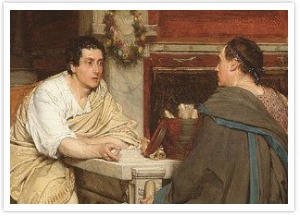Media Discourse Analysis

| Lecturer | Edward HAIG, Professor |
|---|---|
| Recommended for: | Graduate School of Languages and Cultures Media Professional Course (2・1.5 hours / session One session / week 15 weeks / sem.) |

Goals of the course
This course has two main goals:
- to introduce the theory and methods of Critical Discourse Analysis (CDA) and
- to give participants practice in applying CDA to selected media texts such as newspaper and magazine articles, advertisements, TV broadcasts, films and the Internet.
Using CDA as a research tool, students will consider the following questions: how are the mass media affected by, and how do they affect, power relations within society? And how are these power relations realized in media texts? Through this course, students will gain a solid grounding in critical media literacy.
Key Features
One of my educational goals in this course is to help students to read academic texts written in English. The textbook for this course is Analysing Discourse by Norman Fairclough. The author is one of the leading theorists of Critical Discourse Analysis and this is his newest and, in my opinion, best textbook. Unfortunately, this book has not been translated into Japanese yet. Therefore, to help my students to read this book I have made a paragraph-by-paragraph summary and commentary in simplified English of each chapter. I have also made sets of PowerPoint slides about each chapter. Using these supplementary materials, students are able to understand the textbook much more easily.
Another goal of this course is to help students to give high-quality presentations about the topic of the lessons. In each lesson, two students cooperate to give a presentation about part of the textbook. Every week, one or two days before the lesson, I meet with the students' whose turn it is to give a presentation. The students make their presentations and I give them feedback and advice in order to improve them. I also check their handouts and give them sets of Discussion Questions. In this way, students are more confident and are able to give better presentations and the lessons are more productive, interesting and enjoyable.
Content of lesson
Despite all the tremendous changes that have been happening in the various types of media in recent years, one thing that still remains an essential factor for every type of media is language or, more broadly, semiosis. Therefore, a theoretically-based understanding of media language is clearly an essential part of the education of media professionals. At the same time, the concept of 'discourse' has become a very fashionable one in the academic fields of the humanities and social sciences, to such an extent indeed that it has almost replaced'ideology' as one of the most important analytical categories. But what exactly is 'discourse' and how can we study it in media texts?
Like other approaches to the study of discourse, the aim of Critical Discourse Analysis (CDA) is to analyse how language is used in real social contexts. However, CDA differs from other approaches to discourse analysis in (1) its view of the relationship between language and society and (2) the relationship between analysis and the social practices analyzed. Firstly, CDA assumes that there is a dialectical relationship between discourse and context: a discursive event is shaped by the situations, institutions and social structures of which it forms a part, but at the same time it also shapes them. Because discourse is dialectically related to context, discursive practices may have major effects on other aspects of society. However, people are often unaware of the ideological loading of particular ways of using language and the relations of power that underlie them. CDA attempts to make these frequently obscured aspects of discourse more visible by applying a combination of linguistic and sociological theories to texts and contexts. However, secondly, CDA is not a dispassionate and objective form of social scientific or linguistic research. Rather, it is politically-engaged and committed to intervening on the side of dominated and oppressed groups.
Textbook
Richardson, John. Analysing Newspapers: An Approach From Critical Discourse Analysis. Basingstoke and New York: Palgrave, 2007.
Reference Books
These will be introduced during the course.
Notes
In this course the media texts to be analysed will be selected from both English and Japanese media.
Assignments
Course Schedule
| Session | Content |
|---|---|
| 1 | Course Introduction |
| 2 | Overview of Critical Discourse Analysis |
| 3 | Introduction: Newspaper Discourse(AN Chapter 1) |
| 4 | Analysing Newspapers: Context, Text and Consequences (AN Chapter 2) |
| 5 | Analysing Texts: Some Concepts and Tools of Linguistic Analysis (AN Chapter 3) |
| 6 | Discursive Practices: Producing Print Journalism (AN Chapter 4) |
| 7 | Social Practices: Journalism and the Material World (AN Chapter 5) |
| 8 | Applying Discourse Analysis: Argumentation and Letters to the Editor (AN Chapter 6) |
| 9 | Critical Discourse Analysis: War Reporting (AN Chapter 7) |
| 10 | Conclusion to Theoretical Component of Course (AN Chapter 8) |
| 11 | Review of Theoretical Component |
| 12 | Group Presentations |
| 13 | Group Presentations |
| 14 | Group Presentations |
| 15 | Group Presentations |
Lecture Handouts
Lesson #3, 4 Chapter 1 Introduction
Lesson #5, 6 Chapter 2 Text, social events and social practices
Lesson #7, 8 Chapter 3 Intertextuality and assumptions
Lesson #9, 10 Chapter 4 Genres and generic structure
Grading
Students will be assessed according to the following factors:
- attendance;
- participation in in-class discussions;
- two mid-course presentations;
- and a final written report.
Last updated
May 08, 2020
